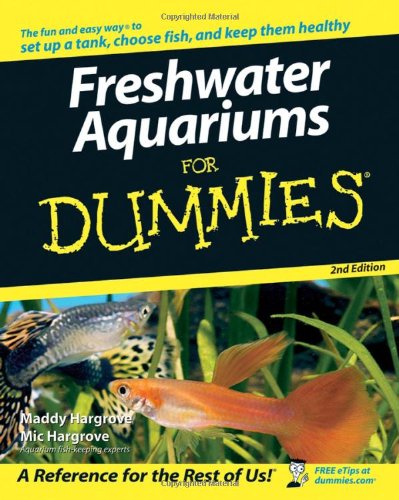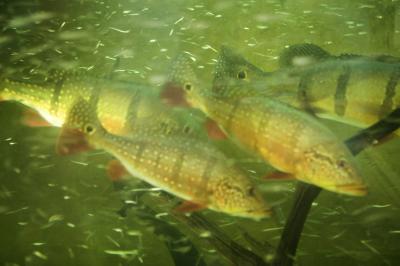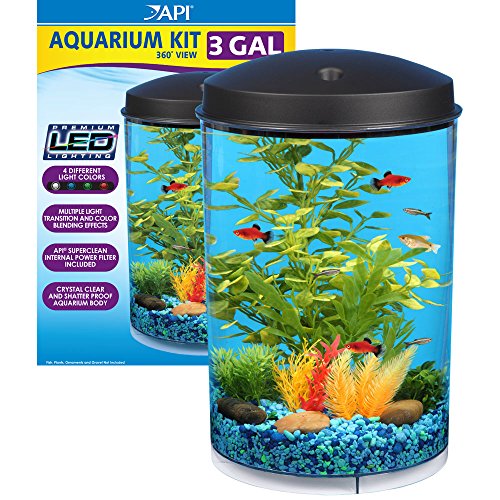
Whether you bought it, a child brought it home or you found it on the doorstep ... one of the charms of owning a fish tank is getting to design and decorate it. You can do pretty much anything you want when it comes to decorating your tank – todays pet market and fish industry have almost every kind of novelty item you can think of, from bubbling scuba divers to open and closing treasure chests to realistic fake plants and woods.
How you decorate your tank is entirely personal and up to you. I always lean towards and use au natural type designs with sand, rocks, wood and fake, sometimes real, plants.
I'll be honest, the various pet and aquarium stores charged ridiculous amounts of money for small pieces of 'designed and safe' wood as well as 'safe' rocks, but my tanks were large and I was seeking three and four-foot pieces not twelve inches.

It's not surprising that I eventually learned how to pick wild woods and rocks for my tanks, the benefits and the downsides, how it affects the tank water and its occupants. All the money I saved went into upgrades for the all the tanks. Below is a summary of what I have learned and how you can go out and select non-store bought woods and rocks.
I do want to say that my tanks contain turtles and fish. Fish are more sensitive to water changes and quality than a turtle is. My fish are turtle food and other than being a nutritious and disease free snack for my turtles I admit they are not my top priority in my tanks and any references to fish and water quality in this article I suggest double checking against more reliable fish resources, for the safety of your pet fish.
Advantages and Disadvantages of Wood and Rock
There are several advantages and disadvantages associated with the use of wood or rocks in your aquarium whether store-bought or taken from the wild.
Often fish and tank enthusiasts use chemicals to cause water parameters to change, but rocks and wood can do the same thing. Some rocks can cause the pH of your aquarium to rise. Driftwood will more often than not lower pH and soften the water. Fish are sensitive to water changes, particularly abrupt ones, if you already monitor your water quality and seek to raise or lower your tanks pH you can use woods or rocks to naturally solve your water quality problem. If you add them to a balanced tank you risk lowering water quality and possibly killing the occupants.
A healthy tank will have a great deal of nitrifying bacteria, and rocks and woods of all kinds provides this added surface area for the bacteria to colonize on. Bacteria are needed to help with water quality – they remove ammonia and nitrites (which are deadly to fish) from the aquarium.
The two major disadvantages to using rocks and wood, the first is the weight it can add to a tank. Too much on either side, front or back can have disastrous results. Many use egg crate to disperse the added weight of rocks.

The second disadvantage is driftwood can turn your water to a yellow-brown colour. This is due to tannins and will over time lessen and stop altogether. It is not dangerous, just visually unappealing to many. Though those who create biomes of blackwater environments aim for this effect.
Rocks and wood provide more than an authentic look to the tank, it also offers health benefits to the tanks occupants – whether fish or turtles. The most obvious is the lowered stress when the tank resembles a realistic habitat, quicker adjustment to its new home but also provides places to hide during times of stress. Some species of fish eat algae off rocks and wood and it provides them an opportunity to behave naturally and not eating a green tab.
A downside to all this health benefits is offering places to hide. Besides the fish hiding, uneaten food and debris also tend to hide under and around the decor. If you have little decor, this is not so bad, but if you have a number of pieces then cleaning can be either difficult or time-consuming. Stacks of rocks and wood will need to be removed regularly (monthly) and cleaned. It's harder to catch live fish, particularly the faster moving species, and to see or remove dead ones.
Found It. Can I Use It?
I must have drove the koi guy at the garden centre (he was also a fish hobbyist) insane with my regular question of “I found the piece I want, can I use it?” and usually proceeded to describe said wood or rock. The answer I learned had several parts, and in the beginning of my education the answer was usually no. Below is the advice I received and found success with.
The first thing I learned was that my patience was about to be tested when it came to preparing wood for the tank. This can be a time-consuming process depending on the size of the piece and if your like me I was quite eager to get it into the tank.
Before I do anything, I boil it if possible – usually small pieces, sometimes I boil the larger pieces half at a time. More often than not I end up soaking it in hot water for several hours, usually half a day. I constantly top up the water to keep it hot and steaming. This kills or eradicates the majority of the bacteria on the rock or wood. For the next three days to a week I continue to soak in water – warm to hot – and scrub the wood.

Earlier in the article I mentioned tannins, not all pieces of wood contain tannins – due to how wood degrades when in water driftwood tends to contain tannins. During the above soaking period if the water is continually discoloured, then the wood has tannins in it and it may take weeks to months of soaking for the tannins to disperse completely (stop colouring the water). While not dangerous to fish, it can cause pH changes in the water which can be dangerous to fish. Avoid using bleach to speed things up or clean the wood better – your more likely to screw up your tank down the road.
Once you have soaked and scrubbed the wood and you're satisfied with the removal of tannins (if present) you want to make sure the wood, which is now water-logged and will sink to the bottom of your tank, will not crumble and degrade quickly in the aquarium. You do this with a crumble test, you may have noticed during the cleaning and soaking wood flaking off and crumbling, this may have lessened or worsened. If it worsened the wood is likely no good.
In case you didn't take note, you can take a sturdy brush and scrub roughly the wood and its ends, then re-soak for a day. Brush roughly again – if it crumbles or is still flaking, chances are it is going to degrade quickly in the tank.
Because I needed wood that floated and not wood that sunk to the bottom, I had the added step of letting the wood dry out which sometimes took months. Just make sure it receives good airflow, lots of sunshine and flip it now and then, don't let it sit on one edge or side the entire time. Dried wood will be very light. Ocean (salt water) driftwood, should never be added to a freshwater tank even with soaking and cleaning.
In the case of rocks, boil for a few hours, scrub, cool and add to tank. Once you have identified the rock as safe that is.
Rocks are inert. They just sit there. Sometimes they are flat or round, have an interesting appearance, but mostly, they are just ... there. It's hard to imagine that a rock can alter water chemistry. But as I learned there's much more to picking rocks than wood – which mainly was based on how it looked, its size and so on.

Besides affecting waters pH, softness or hardness it can also introduce heavy metals into the water. The type of wood is not always important but the type of rock is very important. If you're not sure what the coloured line is running through the rock you can't be sure what its effect on the tank water or occupants will be. Any rock with rust on it has metal in it and should be avoided – this is seen with many rocks found in urban areas. Pyrite is another rock that should never be used in an aquarium. Identify your rock before sticking it in the tank.
Even if the rock is not going to leach heavy metals into the tank or poison it, it can alter water parameters. Some rocks will affect water pH levels quickly others will be overstated and cause barely a dent in it. Rock can also affect whether the water is soft or hard and levels of (buffering ability). Limestone and Texas holey rock for freshwater tanks as well as petrified coral for saltwater tanks are considered safe to use as their impact is quite small.
I took awhile to acquire the knack of identifying rocks – harder than it sounds. I always tested the rocks by soaking and monitoring water parameters – small changes did not bother me as turtles are more resilient to water changes. This was more a safety measure than anything, since I did not trust my rock identifying skills. Later I learned about simple (but unreliable) tests that could be used to tell whether the wood or rock was safe, but I much preferred the soak and monitor method which was reliable.
As with wood, try to be aware of where the rock is coming from – forest or industrial land, clean or polluted areas, submerged in water or buried in soil. I try to grab my wood and rocks when we go further north camping.
The types of rock commonly seen sold in pet stores for aquariums (and depending on your location maybe available in your backyard) other than the two mentioned before (limestone and Texas holey rock) include lace rock, slate (great for stacking), quartz, lava rock (usually attacked to a heavier rock to allow it to sink) and sandstone.
I can't remember a time my house did not have a fish tank, or two or three, in it. Besides housing turtles I also kept planted tanks, newts and indulged in biomes for my fish tanks. For me, aquariums were about creating natural habitats that thrived. For others it is about how the fish tank looks or its aesthetic value. For yet others it is all about novelty items and themed fish tanks.
The way you view your tank or the purpose you see for it are important to take into consideration when adding the rocks and wood to the tanks design. It's hard to make rocks and wood look unappealing, but not impossible.
Some of the more beautifully designed tanks look like everything was tossed up into the air and let land where it may. And nothing could be further from the truth. Many fish keepers who seek a thriving habitat put a lot of time and effort into their designs, often changing them day by day based on fish behaviour or use of items.

The easiest way to start a natural look is to use a variety of rocks, woods and plants that are various sizes and shapes. Placing the largest or most attractive piece in the middle and building up around is another method. Others build up corners, or along the walls.
Three of my tanks are natural designed and each is different from the other despite using only rocks, wood, sand and plants.
One tank is set up with plants all along the side, back corners and back wall. The middle is open with rocks scattered along the bottom. It has floating driftwood with plastic vine type plants attached and trailing into the water. One corner has floating plant mass.
The second tank is reminiscent of a lake filled with spring and early summer weed bloom. The entire bottom is covered with varying lengths of wood and heavily planted with small openings or gaps.
The last tank has rock piles and tall stringy looking grasses growing in clumps. The driftwood is partly sunk (the top is lighter and floating while the bottom is heavier – eventually it will become water-logged and sink fully). The bulk of plants are in the middle.
Each tank's designed for its occupants – swimmers need space, quiet shy occupants need places to hide, feel safe. For some pieces in the tanks I attached plants, rocks, and wood pieces together as a single piece – it was just easier and allowed me to control the look of the piece.
 Advantages of a Freshwater Aquarium
Owning a freshwater aquarium
Advantages of a Freshwater Aquarium
Owning a freshwater aquarium
 Why are there so Many More Shark Attacks?
In 2004 16 year old, J.P And
Why are there so Many More Shark Attacks?
In 2004 16 year old, J.P And
 Cloudy Eyes on Aquarium Fish
Cloudy Eyes on Aquarium Fish
Cloudy Ey
Cloudy Eyes on Aquarium Fish
Cloudy Eyes on Aquarium Fish
Cloudy Ey
 Aquarium Heaters
Anyone looking to set up an
Aquarium Heaters
Anyone looking to set up an
 How to Not Kill your Fighting Fish
A little over a year ago, my
How to Not Kill your Fighting Fish
A little over a year ago, my
Copyright © 2005-2016 Pet Information All Rights Reserved
Contact us: www162date@outlook.com